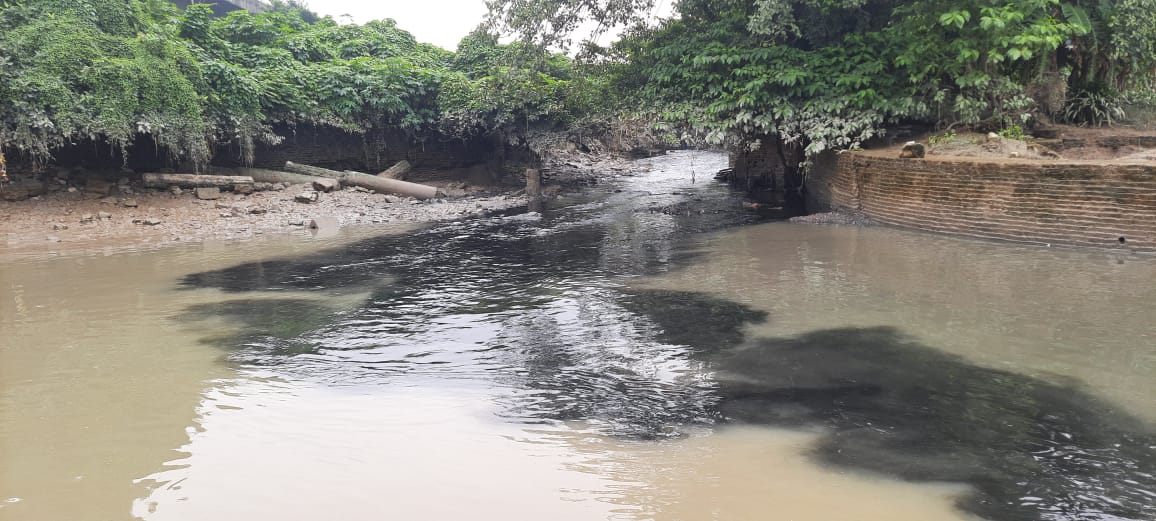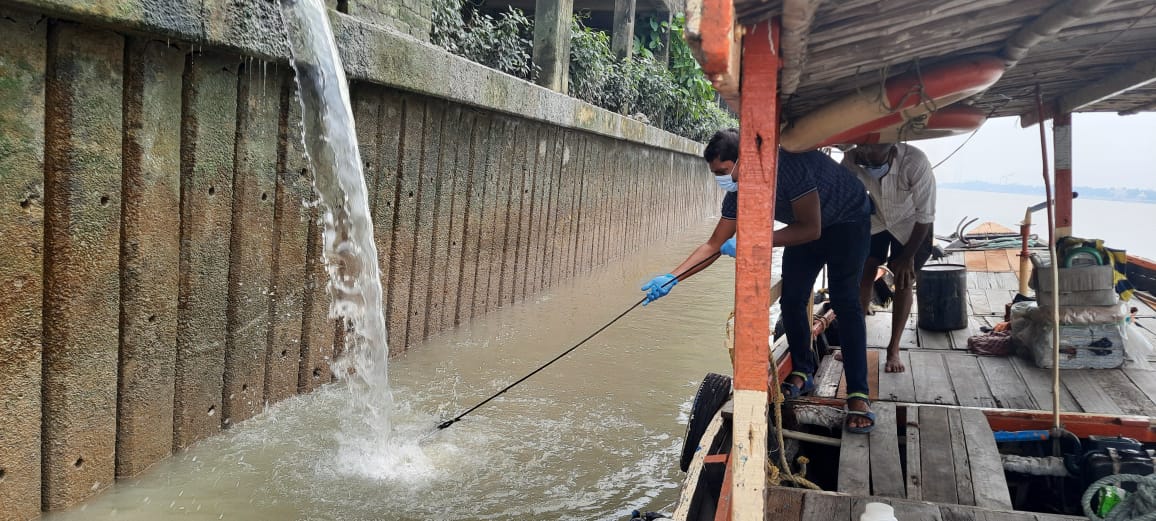How ‘alarming’ pollution in lower Ganges is impacting one of world’s richest mangrove forests
Pollution in lower stretches of the Ganges will have an adverse effect on the biodiversity of Sundarbans — one of the world’s richest mangrove forest ecosystems, scientists tell Namita Singh


Every year hundreds of thousands of Hindu devotees take a dip in the holy Ganges river at the Hindu religious site of Dakshineswar in the eastern Indian state of West Bengal.
But recent research by a group of scientists have thrown up alarming statistics about the quality of water at the site, with cascading effect on another important location close by — the Sundarbans — home to one of the world’s largest and richest mangrove forests.
Coordinated by microbial ecologist Dr Punyasloke Bhadury, a team of four researchers examined the health of a 65km-stretch of the Ganges in West Bengal.
“The algal bloom we found in Dakshineswar indicate poor water quality and possibly unfit for use by humans for religious bathing,” says Bhadury.
As part of the research funded by the Water Technology Initiative of the Department of Science and Technology under the government of India, the team surveyed the river in Dakshineswar. Their research suggests the pollution in lower stretches of the Ganges will have an adverse effect on the biodiversity of Sundarbans, that derives its name from the Sundari trees once found in abundance.
The teams conducted several rounds of water sampling spanning September 2019 to March 2021. The study sites were divided into 70 stations based on their vicinity to municipal discharge drains and industrial effluent release points.
“The idea was to understand how is the water quality in the lower part of the river Ganga and how can we clean it up with the information we have in the upper and the middle part of Ganga,” Bhadury says. “We monitored this for almost three years and found that the pollution in lower part of river Ganga is actually pretty bad.”

The researchers assessed the dynamics of key environmental variables, including forms of dissolved nitrogen and oxygen. They also analysed other environmental parameters such as pH, surface water temperature, and electrical conductance which together gives the water quality index that helps determine the health of a river.
They found the release of untreated waste from municipal drainage led to “a decrease in dissolved oxygen concentrations and can potentially result in harmful algal bloom formation”.
Algal blooms are mainly caused by eutrophication — presence of excess nutrients often nitrogen and phosphorus — from agricultural fertiliser runoff, untreated sewage discharge or industrial wastewater entering the water bodies. This depletes the dissolved oxygen concentration in the water due to the high respiration rate, explains Bhadury.
Such situations of oxygen depletion, eutrophication and harmful algal bloom can adversely effect the aquatic fauna including fish and often result in disproportionate fish death.
The researchers also collected samples in October 2020, when a significant part of the country was under lockdown and nature was said to be “healing”.
Their research did not indicate a significant effect on the improvement of water quality in Dakshineswar site of the lower stretch of Ganga during the lockdown, Bhadury says.
Under the National Mission for Clean Ganga “this requires thorough introspection to ensure direct discharge of untreated municipal sewage does not happen and also have an effective and healthy river basin management,” he adds.
The researchers concluded that rapid human pressure and anthropogenic activities resulted in the release of untreated municipal and industrial sewage along with other forms of pollutants in the Ganges.
“We showed that even with the monsoon and so much rainfall happening in the Bengal Delta frame, still the water quality is very bad,” says Bhadury.

“Therefore, the study actually provided a benchmark for the state of the health of river Ganga because it is ultimately this river that ends up in the Sundarbans,” he said. “And because the biodiversity in Sundarbans has not evolved in the presence of pollutants, it will be in trouble”.
In a letter to the federal Department of Jal Shakti (Water Resources), Bhadury mentions that the rise in algal-driven eutrophication might “have long-term consequences on the health of the river in and around Kolkata and beyond such as ecologically sensitive Sundarbans mangrove”.
The largest continuous mangrove forest straddling India and Bangladesh, the Sundarbans are already seeing an impact of water pollution in the Ganges, explains researcher Anwesha Ghosh.
A sharp increase in concentration of dissolved inorganic nitrogen was found at several estuaries of Sundarbans after almost a decade-long research at the Unesco World Heritage Site.
“Since our use of nitrogen based compound is very high in the upstream of the river, there is a lot of nitrogenous compound flowing through Ganga into the Sundarbans,” she tells The Independent.
“While bacteria prefer using certain type of nitrogen, including ammonia, there is a proportionally higher concentration of nitrate in the waste that enters the Sundarbans from upstream.
“Nitrate is a less preferred source of nitrogen and is not easily utilised by bacteria, resulting in a build-up of nitrate in the system,” she says.
“For microorganisms, including bacteria, nitrate is the molecule of nitrogen which isn’t used. So, what this means is this trend of having nitrate in the system has increased over the last ten years.”
Dr Ghosh explains that when there is a lot of nitrogen, algae starts to bloom. Rapid uncontrolled nitrogen levels “can lead to bloom of harmful bacteria that can cause diseases to fish and humans”.
The threat to riverine ecosystem comes as conservationists struggle to save the mangroves that Sundarbans was named after. Herritiera Fomes, a fresh water mangrove locally named lata Sundari, is listed under the International Union for Conservation of Nature endangered species list.
“It used to be one of the most dominant species in the Indian and Bangladesh Sundarbans,” explains Dr Krishna Ray, assistant professor at the Department of Botany in West Bengal State University. “It is its local name, sundari which gives Sundarbans region its name.”
“But now you can hardly find its natural population,” she says. She blames a decreased supply of fresh water and increase in salinity behind the rapidly declining population.
Having examined the change in water salinity and its impact on the Sundarbans for about half a decade, she says that due to several obstructions, including those caused by dams, barrage and plastic pollution, the freshwater flow in the lower stretches has gone down.
“And that has caused a very steep rise in the salinity,” she adds. “And that is why only saline water mangrove is flourishing,” she said. “Freshwater mangroves on the other hand, are gradually depleting.”
Join our commenting forum
Join thought-provoking conversations, follow other Independent readers and see their replies
Comments